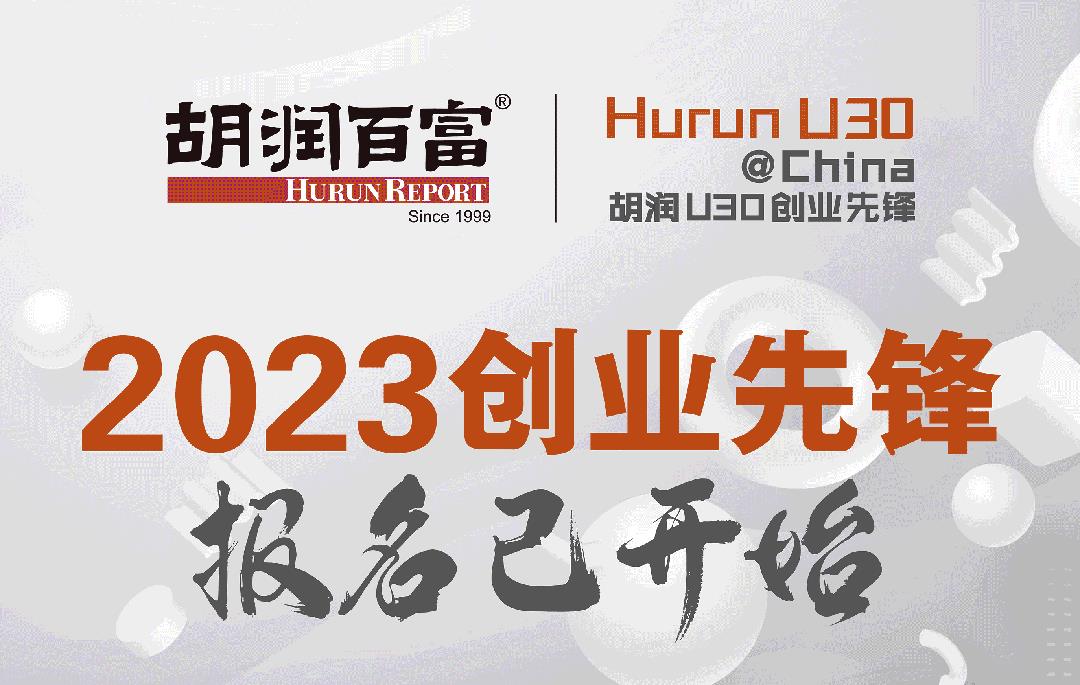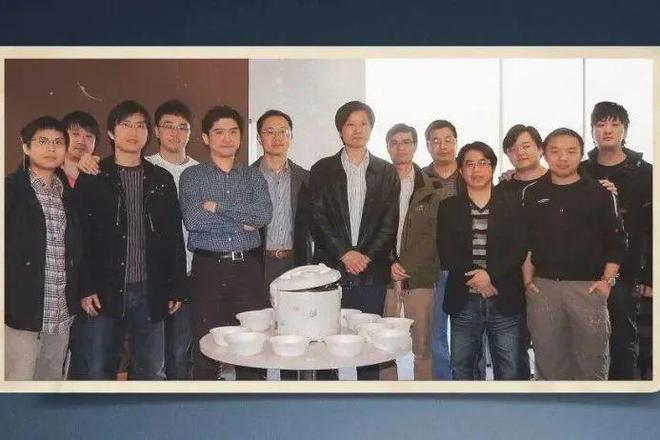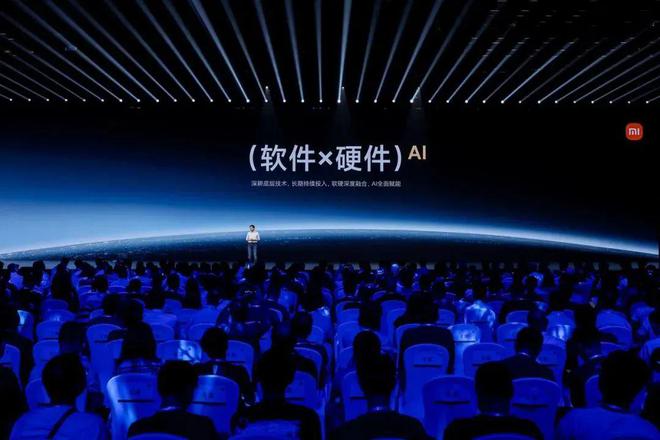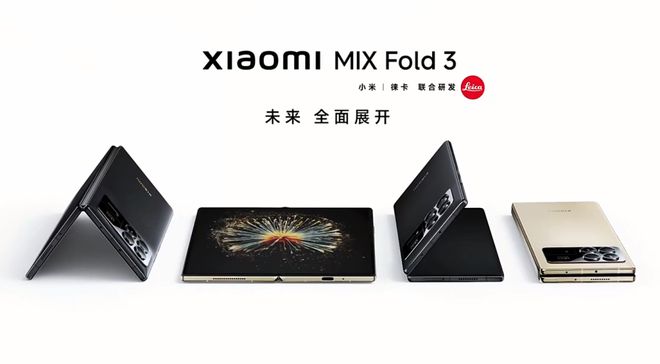
In the past two years, entrepreneurs have become a "silent majority", and only Lei Jun, the founder of Xiaomi Company, still insists on giving an annual speech. On August 14th, Lei Jun’s fourth annual speech arrived as scheduled. The theme of this speech was "Growth", and it continued the speech mode of story+product in previous years: in the three-hour speech, the first half was Lei Jun’s personal speech, and the second half was the release of new products.
Lei Jun started with his study experience at Wuhan University, and he recalled his entrepreneurial dream when he read The Fire of Silicon Valley. At the age of 28, he became CEO of Jinshan, changing from a programmer to a manager; At the age of 40, Xiaomi was founded, and his dream gradually came into reality … In this speech, Lei Jun focused on the high-end strategy of Xiaomi mobile phone and the development plan of large model, but almost nothing was said about the car-making progress that the outside world was most looking forward to.

Image source: Xiaomi Company
Lei Jun’s "Growth"
As the first batch of programmers in China, Lei Jun entered the profession earlier than most of the internet tycoons who people are familiar with. As he mentioned in his annual speech, as early as August 1990, when he was a junior, he was "famous" in Wuhan Electronic Street with excellent technology, and earned his first pot of gold by writing software.
In 1992, Lei Jun joined Jinshan with Qiu Bojun after graduation, and he became the chairman all the way, making him the strongest "migrant worker". As early as 1998, when people were familiar with Ali and Tencent, Lei Jun had already served as the general manager of Jinshan Company. In 2007, after working in Jinshan for 16 years, Lei Jun finally led the company to be listed on the Hong Kong Stock Exchange, and then announced his "resignation" from Jinshan.
In 2010, after "retirement", Lei Jun, at the age of 40, founded Xiaomi, and grew into the largest mobile phone manufacturer in China in just four years. In July 2018, Lei Jun led Xiaomi to be listed on the Hong Kong Stock Exchange. In the previous list released by Hurun Research Institute, Xiaomi ranked 29th with a valuation of 244 billion. It shows that Lei Jun ranks 47th with a net worth of 75 billion RMB.

In April 2010, Xiaomi Company was founded.
Image source: Xiaomi Company
Although he brought out two listed companies in one hand and had already realized the freedom of wealth, Lei Jun did not choose to retire. In 2021, he started Xiaomi’s "second venture" and officially announced the construction of a car. In April this year, after the attack of generative AI, Xiaomi set up a big model team and began to bet on AI in an all-round way.
In the speech,Lei Jun officially announced the strategic upgrade of Xiaomi Technology, which can be summarized as "one idea, four key paths and principles"."One idea" is to choose the technical field with long-term value to human civilization and insist on long-term continuous investment. Lei Jun said in his speech: "People are the origin of science and technology. Xiaomi’s scientific and technological exploration should be valuable not only to human life now, but also to the creation, progress and development of human beings in the future."
Two long-term is the core of Xiaomi’s scientific and technological concept. In order to ensure its implementation, Xiaomi has established "four key paths and principles": deep cultivation of the underlying technology, long-term continuous investment, deep integration of software and hardware, and comprehensive empowerment of AI.
The importance of the underlying technology is self-evident, but it is not possible to see the results overnight, especially to test the patience, determination and vision of enterprises. In terms of R&D investment, Xiaomi’s R&D investment will be about 16 billion in 2022, a year-on-year increase of 21%. It is estimated that the total R&D investment in 2023 will exceed RMB 20 billion, and Xiaomi’s R&D investment in the next five years (2022-2026) will exceed RMB 100 billion. From 2017 to 2022, the compound annual growth rate of millet R&D investment reached 38.4%.
In view of the integration of software and hardware and the comprehensive empowerment of AI, the conference also disclosed the latest progress of Xiaomi’s large model, involving research and development, application and even enterprise organization production. It can be seen that in Xiaomi’s eyes, AI technology including large models is a kind of productivity. Xiaomi will embed AI capabilities into all aspects from internal organization to external experience, which is the real essence of AI sub-methodology-using AI to install super brains for business and products.

Image source: Xiaomi Company
Xiaomi mobile phone, the suffering and breakthrough of high-end
Smartphone is the starting point of Xiaomi’s establishment and one of its most powerful businesses at present. Compared with the past three speeches, Lei Jun’s speech this year is less painful and more successful. But the pressure on Xiaomi is not small.
In terms of main business, the decline of Xiaomi’s mobile phone revenue reached 20% in the whole year of 2022 and Q1 of 2023. From the perspective of the market, in Q1 and Q2 of 2023, Xiaomi maintained the third place in the global market, but fell out of the top four in the domestic market, with the largest decline among manufacturers.
On the other hand, according to Xiaomi’s previously released financial report for the first fiscal quarter of fiscal year 2023, Xiaomi ranked first among Android manufacturers in the price range of 4000-5000 yuan in mainland China in the first quarter, and its market share increased to 24.1% year-on-year. Shipments of high-end smartphones priced at 3,000 yuan and above accounted for a year-on-year increase of 4%, and smartphones ASP in mainland China hit a single-season high, with a year-on-year increase of over 18%.

Image source: Connected Insight
The increase in the proportion of high-end mobile phones has brought higher gross profit margin to Xiaomi, but the high-end strategy is not easy all the way..Three years ago, Lei Jun gave his first personal keynote speech on the 10th anniversary of Xiaomi on the stage of the National Convention Center, and announced the launch of Xiaomi 10 Ultra, the first smart phone product for the high-end market.
Xiaomi 10 played a "good start" for the high-end transformation of Xiaomi. Unfortunately, the good times did not last long. Xiaomi 11 and Xiaomi 12 suffered successive setbacks, which made it difficult to meet expectations and even made the company suffer serious losses. "Everyone has no idea how scary and stressful it is to be a high-end flagship loss." Lei Jun mentioned that investing heavily in high-end mobile phones once frustrated the team, and even he himself had a "heavy" Spring Festival in 2022.
At that time, Xiaomi focused on "stacking". On the way of blindly emphasizing parameters, we forget that the user experience is more important. Not only is it a financial loss, but the greater price is that Xiaomi’s internal team has questioned the high-end strategy.
Whether Xiaomi can do it or not has become a question buried in the bottom of every employee’s heart. For this reason, Lei Jun spent a lot of time communicating with the team and finally determined the brand strategy of sticking to the high-end route. Under the insistence of Lei Jun, Xiaomi 13 made a turnaround and achieved a breakthrough, which became the representative work of Xiaomi’s "from parameter leading to experience priority" in Lei Jun’s mouth.

The success of Xiaomi 13 completed a turnaround for Xiaomi.
Image source: Xiaomi Company
In Xiaomi 13 and its subsequent attempts, Lei Jun re-realized that a success is not universal, and the most important thing to do high-end mobile phones is to have systematic thinking. However, it must be admitted that when the mobile phone industry enters the stock market, the fierce competition in the high-end market cannot be underestimated, and high-end is a must for major mobile phone manufacturers.
From suffering to breakthrough, from being questioned to being recognized, Xiaomi’s high-end road is the most painful and rewarding growth for Lei Jun in the past decade. He said that in the face of fierce competition from Apple, Samsung and Huawei, only by insisting on high-end transformation can Xiaomi win living space for the future and force Xiaomi’s technological development. With Lei Jun’s cognitive growth,Xiaomi’s high-end road has also ushered in a new tone-high-end is not a multiple-choice question, it is the only way for Xiaomi’s development, and it is also a battle of life and death.

The MIX Fold 3 folding screen mobile phone released by Xiaomi this time.
Image source: Xiaomi Company
Cross-border car making is not only diversified.
In addition to the high-end mobile phone, Xiaomi’s core growth curve is the car-making project. However, at the press conference announcing the strategic upgrade, Xiaomi Automobile was intentionally or unintentionally diluted, which is an important part to judge the future development prospects of Xiaomi.
To understand the significance of automobile business to Xiaomi, we should not only look at Xiaomi itself vertically, but also look at the industry trend horizontally. From the perspective of Xiaomi’s ecology, it has been three years since it officially entered the new energy automobile industry in 2021. In the first phase of autonomous driving, Xiaomi invested 3.3 billion yuan in R&D expenses and set up a top R&D team with a scale of over 500 people.
In addition to investing heavily, Xiaomi also actively adopts ecological empowerment. At the beginning of Xiaomi’s autonomous driving technology, after the technical layout strategy of the full-stack self-developed algorithm was formulated, in addition to the exclusive team of over 500 people, many collaborative teams such as artificial intelligence laboratory, Xiaoai team and mobile phone camera department also gave strong support. The team delivered a large number of core technologies accumulated in the past years to Xiaomi Automobile with systematic technological innovation, making it form differentiated competitiveness.

Image source: Connected Insight
Horizontally, for modern people, "car" as a mobile space and a fixed space "home" together constitute the main scene of daily life. The space inside the car will become a high ground for technology companies, which is why mobile phone manufacturers build cars across borders, and the new forces of building cars are also testing the smart phone business.
Previously, Xiaomi has been deeply involved in mobile phones and AIoT for many years. Once the mobile scene card is completed, the closed-loop ecology of Xiaomi’s smart scene will be formed. Therefore,Building a car for Xiaomi is by no means a simple business diversification, or looking for a second growth curve, which has a deeper and deeper value, that is, completing the last link of Xiaomi’s intelligent ecology.
As an important part of Xiaomi’s business map, with the mass production of automobiles next year, Xiaomi will become the only technology company in the world to realize the complete self-research layout of mobile phones, automobiles and AIoT, and complete the closed-loop technology ecology of people and cars, and the moat of Xiaomi will be dug deeper. Since the production car has not yet appeared, Xiaomi has not pushed the car business to the center of the stage for the time being, but the hand left behind has hidden greater ambitions and territory.

Image source: Xiaomi Company
Looking back, Xiaomi is lucky: when he entered the smart phone industry in 2010, the mobile Internet feast just kicked off; When the eco-chain model was launched in 2014, smart life was becoming a new wave; When it enters the research and development field of bionic robots in 2020 and enters the new energy automobile industry in 2021, AI technology and automobile revolution are brewing a new wave of technological change.
Building a car is a new journey for Lei Jun, and its success directly affects the future of Xiaomi. As a latecomer, it is getting closer and closer to the mass production schedule, and the time left by the market for Xiaomi Automobile is already very urgent. "99% of the questions have standard answers. When you don’t understand, ask someone." Xiaomi’s next answer may also require Lei Jun to speed up the learning.
Source: City Boundary, Tiger Sniffing APP, Wall Street Technology Eye, Wired Insight, etc.
? END ?
Note: The material of this article comes from the open channels of the Internet. If there is any infringement, please contact us to delete it.